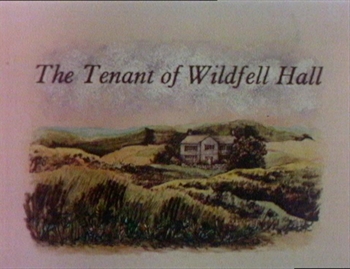Chapter 5‑The tenant of wildfell hall
byChapter 5–The Tenant of Wildfell Hall begins with Gilbert Markham accompanying his sister Rose on a visit to Wildfell Hall, prompted by her eagerness to call on the new tenant. Upon entering, they are surprised to find that Mrs. Graham receives them not in a typical drawing room, but in a studio filled with canvases, easels, and the scent of fresh paint. The space reflects not only her passion for art but also her practicality—transforming her living quarters into a place of work and expression. Gilbert is struck by the sight of her at the canvas, wholly absorbed in painting a vivid scene of the surrounding countryside. Her ease with the brush and the depth of the landscape she captures suggest not just skill but emotional investment. This detail underscores her independence and hints that her artistry serves a purpose beyond personal enjoyment.
As they converse, Mrs. Graham mentions that she labels her paintings under a false location before sending them to London, concealing her whereabouts. This calculated anonymity reveals her guarded nature and implies that she may be avoiding someone or something from her past. When little Arthur innocently shares that her paintings are sold through a gentleman in London, it becomes clear that Mrs. Graham’s art is not merely a pastime, but her means of financial support. Gilbert is both impressed by her talent and intrigued by her circumstances, recognizing that there is more to her life than what she allows others to see. Her self-reliance, masked by discretion, contrasts with the domestic roles typically expected of women at the time. Anne Brontë subtly critiques these expectations by presenting Mrs. Graham as a woman both resourceful and self-contained.
The studio’s interior reveals more than artwork—it becomes a reflection of Mrs. Graham’s internal world. Among the landscapes are pieces with more emotional depth: quiet portraits, including one of a child’s face, and another depicting a figure standing alone in a bleak winter scene. These selections suggest private sorrow and a lingering connection to painful memories. Gilbert notices a covered canvas turned toward the wall, which stirs his curiosity. Eventually, Arthur blurts out that it is a portrait of “papa,” exposing a past relationship Helen has tried to keep concealed. When Gilbert moves to inspect it, Mrs. Graham abruptly blocks him and rebukes his interest, calling it improper. Her defensive reaction confirms the portrait’s significance—likely connected to an unresolved emotional wound or personal history she wishes to shield from others.
What follows is a brief moment of tension between them. Gilbert senses that his intrusion may have crossed a boundary, but Mrs. Graham’s reaction is not purely angry—there’s a flicker of inner conflict in her expression. Her tone softens, though only slightly, and her final words suggest she does not entirely resent his company. This layered exchange is both revealing and frustrating. The reader is offered glimpses of a complex past, but not yet the full picture. Helen Graham remains both distant and magnetic—an enigma whose silence says more than words. Gilbert leaves the studio unsettled, his admiration now mixed with questions he cannot voice. The moment crystallizes the ambiguity of their relationship: attraction tempered by boundaries, curiosity countered by secrecy.
Brontë uses this chapter to deepen the emotional and psychological landscape of her characters. Through the lens of the studio visit, she draws attention to themes of privacy, self-expression, and female agency. Mrs. Graham’s guarded existence, maintained through deliberate seclusion and economic independence, sets her apart from the other women in the novel who are bound by social roles. Her artistry becomes both shield and voice—a means of surviving and communicating on her own terms. The quiet unveiling of the hidden portrait introduces the idea that the past is never far behind, even for those who try to leave it.
Chapter 5 does more than build intrigue; it challenges Victorian assumptions about women’s lives, work, and emotional independence. Helen is not just a mysterious figure—she is a woman making her way in a society that scrutinizes her choices while knowing nothing of her history. Gilbert’s growing fascination is shaped not by romantic fantasy, but by genuine respect for her depth and dignity. The visit to her studio becomes a pivotal moment, marking the beginning of a relationship defined as much by what is unsaid as by what is revealed. Brontë leaves readers with questions that linger beyond the final lines—questions that push the story forward, inviting closer scrutiny of Helen’s past and the reasons she chose Wildfell Hall as her refuge.

